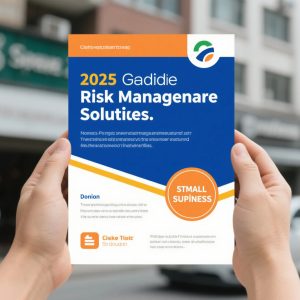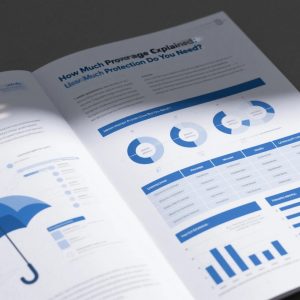The Synergistic Power of Insurance-Trust Combinations
Sophisticated asset protection planning requires more than just stacking legal structures – it demands strategic integration of insurance products with trust vehicles to create an impenetrable financial fortress. While most advisors treat insurance and trusts as separate solutions, the real magic happens when these tools work in concert. Properly structured, this combination provides immediate liquidity from insurance while trusts offer long-term irrevocable trust funding protection that grows stronger over time. The insurance handles smaller, more probable claims while the trust structure defends against catastrophic judgments that could otherwise wipe out generations of accumulated wealth.
This dual approach solves the fundamental limitation of each tool used in isolation. Insurance alone leaves policy limits as the ceiling of your protection, while trusts alone may lack readily available funds to fight protracted legal battles. Together, they form a comprehensive integrated risk management system where the whole becomes greater than the sum of its parts. The key lies in understanding how to structure each component to complement rather than conflict with the other’s protections.
Umbrella Policies as the First Line of Defense
High-net-worth individuals should view umbrella liability coverage as the foundation of their protection strategy before even considering trust structures. These policies provide crucial “gap” coverage that kicks in when other insurance limits are exhausted, typically offering $1-10 million in additional protection at relatively modest cost. However, most policyholders make the critical mistake of treating umbrella insurance as a standalone solution rather than integrating it with broader asset protection planning.
The most effective implementations coordinate umbrella policies with trust structures in several ways. First, the trust can own certain high-risk assets that might otherwise increase umbrella premiums or trigger exclusions. Second, the trust can be named as an additional insured on certain policies where appropriate. Third, insurance proceeds can be structured to flow into protective trusts rather than directly to beneficiaries, preserving the funds from future creditors. This layered approach creates multiple barriers between potential claimants and your wealth.
Irrevocable Trusts as Insurance Policy Holders
One of the most powerful irrevocable trust funding strategies involves having the trust own and be the beneficiary of life insurance policies. This accomplishes three critical objectives simultaneously: it removes the policy death benefit from your taxable estate, protects the cash value from creditors during your lifetime, and ensures the proceeds remain protected for beneficiaries after your death. The trust becomes both the legal owner and beneficiary of the policy, creating an impenetrable barrier against creditor claims while maintaining your ability to control distributions through trust terms.
For maximum integrated risk management, these insurance trusts should be established well before any foreseeable claims and funded through annual exclusion gifts or other tax-efficient transfer methods. The policies themselves can be structured as second-to-die for estate tax purposes or as survivorship policies for business succession planning. When combined with proper legal risk insurance products like personal liability umbrella coverage, this creates a comprehensive protection grid spanning both lifetime and post-death scenarios.
Domestic Asset Protection Trusts with Insurance Backstops
States like Nevada, South Dakota, and Delaware have revolutionized asset protection planning by authorizing domestic asset protection trusts (DAPTs) that allow grantors to be discretionary beneficiaries while maintaining creditor protection. These trusts become exponentially more powerful when paired with appropriate insurance products. For example, a DAPT might hold illiquid assets like real estate or business interests while a companion umbrella liability coverage policy provides liquid funds to defend against any challenges to the trust structure.
The insurance serves multiple purposes in this arrangement. First, it provides immediate resources to pay legal costs if creditors attempt to challenge the trust’s validity. Second, it covers judgments that might otherwise force distributions from the trust. Third, it demonstrates to courts that the trust wasn’t established to defraud creditors but as part of a comprehensive, legitimate integrated risk management strategy. This evidentiary role of insurance in supporting trust validity is often overlooked but can be decisive in litigation.

Insurance Wrappers for Trust-Owned Assets
Creative irrevocable trust funding strategies often utilize specialized insurance products to enhance asset protection. Private placement life insurance (PPLI) and annuities can “wrap” investment portfolios held in trust, providing both tax advantages and creditor protection. These products transform otherwise vulnerable assets into protected insurance values under state exemption statutes while maintaining investment flexibility through sub-accounts.
When structured properly as part of holistic legal risk insurance planning, these wrappers serve multiple protective functions. They can provide liquidity for trust administration expenses, offer long-term care benefits if the grantor becomes incapacitated, and even include riders that accelerate death benefits in case of terminal illness. The trust owns both the wrapper product and underlying investments, creating layered protection that’s extremely difficult for creditors to penetrate.
Coordinating Business and Personal Protection
Business owners require particularly sophisticated asset protection planning that coordinates company-level and personal safeguards. A typical structure might involve:
• The operating business maintaining robust general liability and D&O policies
• A holding company owning business real estate in a separate LLC
• An irrevocable trust owning life insurance on the business owner
• Personal umbrella liability coverage extending above business policy limits
This matrix creates protection at every level while allowing each component to reinforce the others. The trust provides long-term stability, the insurance handles immediate claims, and the entity structure compartmentalizes different risk exposures. Regular integrated risk management reviews ensure all pieces remain properly aligned as the business evolves.
Tailoring Solutions for Professional Practices
Physicians, attorneys, and other licensed professionals face unique challenges in legal risk insurance planning due to ethical restrictions on practice ownership structures. For these individuals, a common solution involves:
• Maximum malpractice coverage with the highest available limits
• Personal umbrella policies extending beyond professional coverage
• Spousal-owned irrevocable trusts holding non-practice assets
• Retirement plans maximized for creditor protection
This approach respects professional ethics rules while still providing substantial irrevocable trust funding protections for personal wealth. The insurance handles practice-related claims while the trust structure protects accumulated assets outside the practice. Careful drafting ensures compliance with state licensing board requirements while maximizing available protections.
Multi-Generational Dynasty Trust Strategies
For families seeking to preserve wealth across generations, combining permanent insurance products with dynasty trusts creates unparalleled asset protection planning. The trust becomes a perpetual protective container, while insurance products provide both liquidity and tax-advantaged growth. A typical implementation might involve:
• A dynasty trust established in a favorable jurisdiction
• The trust owning survivorship universal life policies on the patriarch/matriarch
• Policy cash values invested in a diversified portfolio
• Trust provisions allowing loans against policies for opportunities or emergencies
This structure provides integrated risk management across multiple dimensions. The insurance death benefit preserves family wealth free of estate taxes, the cash value grows protected from creditors, and the trust terms prevent beneficiary mismanagement or external claims. The policies essentially become a protected family bank that can span generations.
Litigation Defense Funding Mechanisms
One of the most overlooked aspects of legal risk insurance planning involves ensuring access to funds for quality legal defense when needed. Many asset protection failures occur not because structures were unsound, but because the defendant couldn’t afford sustained litigation to uphold them. Advanced solutions address this by:
• Establishing prepaid legal defense trusts funded by insurance proceeds
• Utilizing whole life policies with accelerated benefit riders
• Creating lines of credit secured by trust-owned cash value policies
• Structuring liability policies with defense cost coverage outside policy limits
These irrevocable trust funding strategies ensure you can defend your protections when challenged. The trust holds the resources, the insurance provides liquidity, and proper structuring keeps these funds available yet protected from premature seizure by claimants.
State-Specific Exemption Maximization
The effectiveness of insurance-trust combinations depends heavily on state laws governing both products. Some states offer unlimited homestead exemptions that favor real estate holdings, while others provide robust protections for insurance products and trust assets. The most comprehensive asset protection planning analyzes:
• State insurance exemption statutes for different product types
• Trust jurisdiction options and their creditor protection laws
• Premium tax implications for out-of-state products
• Case law regarding insurance-owned-by-trust arrangements
This analysis ensures your umbrella liability coverage and trust structures leverage the most favorable legal frameworks available. In some cases, establishing residency in more protective states or creating trusts under foreign laws can significantly enhance overall protection when properly coordinated with insurance solutions.
Implementation Timeline and Funding Strategies
Effective integrated risk management requires careful timing of trust establishment and insurance acquisition. The ideal sequence typically involves:
1. Establishing irrevocable trusts during low-risk periods
2. Gradually funding trusts through annual exclusion gifts
3. Acquiring insurance products as trust assets
4. Increasing coverage as net worth grows
5. Regular reviews to adjust for legal and financial changes
Rushing this process can create fraudulent transfer risks, while delaying leaves assets vulnerable. The most successful implementations view protection as an evolving strategy rather than a one-time event, with insurance products and trust terms adapting as family circumstances and net worth change over time.
Conclusion: The Ultimate Financial Defense System
Combining insurance and trusts creates the most comprehensive asset protection planning system available today. Insurance provides the liquidity and immediate response capability, while trusts offer the long-term, judgment-proof structure that grows stronger over time. Together, they form a complete defense against both current liabilities and future unknown threats.
Whether through irrevocable trust funding of insurance products, umbrella policies backing trust structures, or coordinated business and personal protection grids, this integrated approach offers peace of mind that no single solution can match. For high-net-worth individuals, business owners, and professionals facing elevated liability risks, this powerful combination represents the gold standard in wealth preservation.





